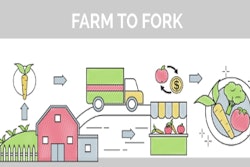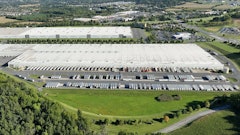
To sustain a competitive edge and deliver on their promise of freshness, an efficient supply chain is essential to Taylor Farms’ vision. This vision of a redesigned supply chain included utilizing innovative technology, as well as selecting a strategic partner to look at the producer’s core competencies and develop more efficient processes.
Established in 1995 in the Salinas Valley of California, Taylor Farms is the world’s largest producer of fresh-cut produce and healthy fresh foods. Providing fresh fruits, vegetables and foods to many of the largest broad- line distributers, supermarket and restaurant chains in the United States. Their customer base includes industry leaders in retail, foodservice and deli.
The Challenge
With a history of innovation in sourcing, harvesting and food safety, Taylor continually refines operations. Their competitive edge is backed by their willingness to experiment with ideas and features that enable them to continually improve their ability to deliver the freshest products to consumers. Like all fresh produce shippers, Taylor Farms was faced with the pressure to reduce operating costs and get their products from field-to-fork as efficiently as possible, while giving customers the best possible experience.
Taylor’s goal to transform shipping operations was driven by Taylor Logistics Company (TLC), their internal, shared, third-party logistics group. TLC was the only business unit to use a transportation management system (TMS). Taylor’s other independent regional business units primarily used spreadsheets—a manual process that was suboptimal.
Even though TLC had an existing TMS, it lacked reporting capabilities, a centralized process and a single data system. Consolidating or pooling shipments between divisions was not possible. Additionally, they were unable to integrate the existing TMS with their enterprise resource planning (ERP) system. After receiving emails from each processing facility, load planners would enter that information into the system manually. This resulted in increased costs and missed opportunities.
Supply chains are complicated, and Taylor Farms needed a partner who would provide an efficient solution to support our strategic goals. Choosing a third-party logistics provider (3PL) with strong governance and change-management processes would allow Taylor to drive value across multiple channels. Careful planning and preparation was the key to their 3PL selection process. They wanted a TMS and systems-integration partner that would develop a highly scalable, low-touch solution for the TLC group. They found that partner in Redwood Logistics.
The Solution
With 14 full-time employees (FTEs), TLC managed most of the inbound transportation and transfer orders of five U.S. regional processing facilities. They began transforming the process by optimizing operations, customer communication, carrier contract management and overall distribution workflow.
The first directive was to implement a new TMS solution to improve the connection between Taylor and their carriers. They needed to reduce paperwork, manage pricing and quickly communicate tracking updates to customers.
For TLC to fully optimize its supply chain, they worked with Redwood to design and implement centralized business processes. TLC's outdated TMS was replaced with RedwoodConnect, a custom cloud-based integration platfrom designed to make it both less resource-intensive and less expensive to connect business applications and data sources. This multi-tiered supply chain solution addressed TLC's inefficiencies, required minimal effort from Taylor's overburdened IT staff, and ultimately, transformed their ability to deliver more efficiently.
The Results
As the new program was implemented, both TLC and their customers immediately realized value. The elimination of manual communications enhanced Taylor’s contract management capabilities as well as tracking and invoicing activities. The new program also established a readily accessible single system for data, reporting and network-level visibility.
For Taylor, the innovation lays within the solutions they now use daily. Integration, which had previously been a roadblock to procuring or implementing new solutions, is now simply the way they do business. This allows Taylor to flex and evolve as needed without the burden of heavy change management or over-reliance on their IT team.
From a single integration point for multiple disparate supply chain systems, to a suite of integrated custom transportation tools, Redwood has helped transform Taylor’s shipping operations from a cost center into a competitive advantage. Through the partnership, they have found the intersection between the challenges of business and the opportunity created through technology. Together, they look to continuously improve Taylor’s ability to serve their customer’s evolving needs.


















